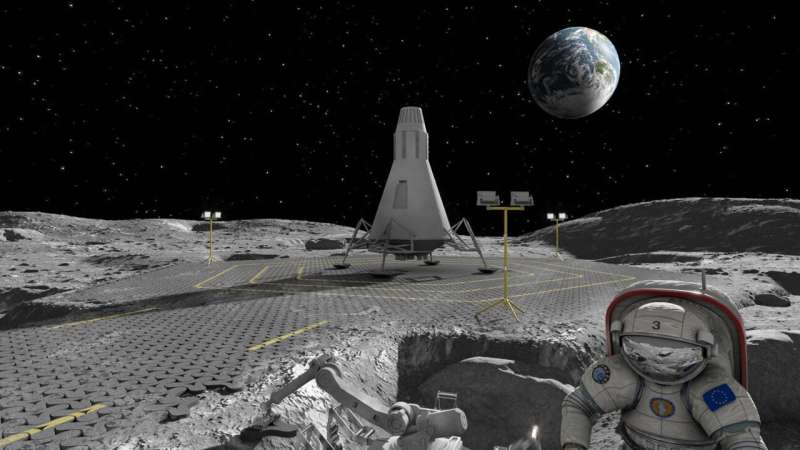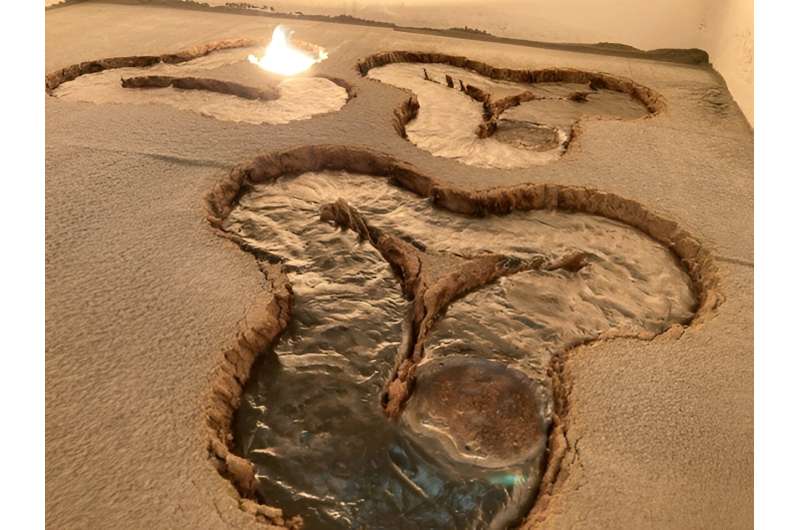However, transporting materials for construction from Earth is costly, so it will be essential to use the resources available on the moon.
Ginés-Palomares, Miranda Fateri, and Jens Günster melted a fine-grained material called EAC-1A (developed by ESA as a substitute for lunar soil) with a carbon dioxide laser to simulate how lunar dust can be melted by focused solar radiation on the moon into a solid substance.
The authors experimented with laser beams of different strengths and sizes (up to 12 kilowatts and 100 millimeters across respectively) in order to create a robust material, although they established that criss-crossing or overlapping the laser beam path led to cracking. They developed a strategy using a 45 millimeter diameter laser beam to produce triangular, hollow-centered geometric shapes approximately 250 millimeters in size. These could be interlocked to create solid surface across large areas of lunar soil which could serve as roads and landing pads, suggest the authors.

To reproduce this approach on the moon, the authors calculate that a lens of approximately 2.37 meters squared would need to be transported from Earth to act as a sunlight concentrator in place of the laser. The relatively small size of equipment needed would be an advantage in future moon missions.
More information: Juan-Carlos Ginés-Palomares, Laser melting manufacturing of large elements of lunar regolith simulant for paving on the Moon, Scientific Reports (2023). DOI: 10.1038/s41598-023-42008-1. www.nature.com/articles/s41598-023-42008-1
Journal information:Scientific Reports
Provided by Nature Publishing Group



